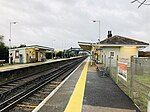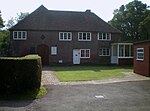RAF Chailey
Battle of BritainPlumpton, East SussexRoyal Air Force stations in West SussexRoyal Air Force stations of World War II in the United KingdomUse British English from November 2017

RAF Chailey was a Royal Air Force Advanced Landing Ground close to the village of Chailey near Burgess Hill in East Sussex during the Second World War. It was an example of an Advanced Landing Ground (ALG), a type of simple, temporary airfield designed to support the invasion of continental Europe.
Excerpt from the Wikipedia article RAF Chailey (License: CC BY-SA 3.0, Authors, Images).RAF Chailey
Beresford Lane,
Geographical coordinates (GPS) Address Nearby Places Show on map
Geographical coordinates (GPS)
| Latitude | Longitude |
|---|---|
| N 50.955277777778 ° | E -0.055555555555556 ° |
Address
Beresford Lane
BN8 4EN , Plumpton
England, United Kingdom
Open on Google Maps








